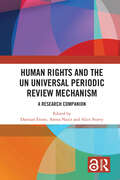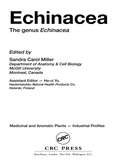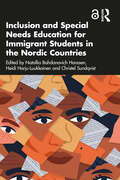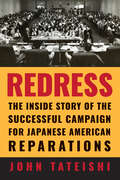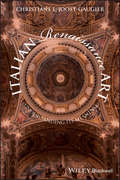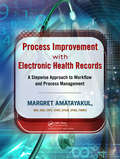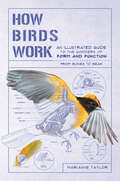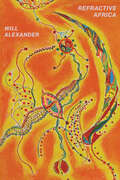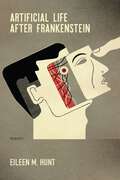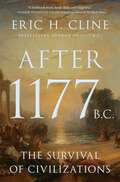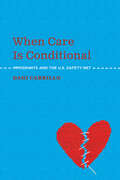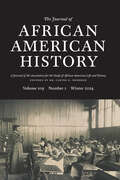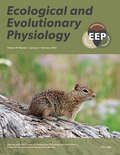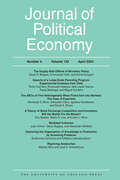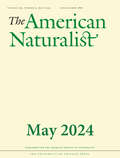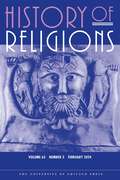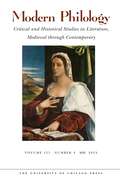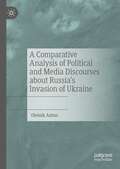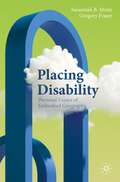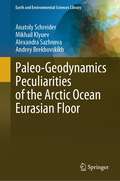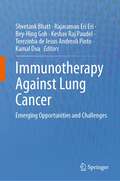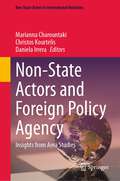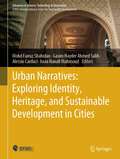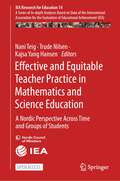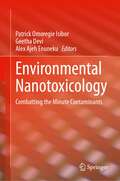- Table View
- List View
Human Rights and the UN Universal Periodic Review Mechanism: A Research Companion
by Damian Etone Amna Nazir Alice StoreyThe Universal Periodic Review (UPR) is a peer-review mechanism, reviewing all 193 UN Member States’ protection and promotion of human rights. After ten years of the existence of the UPR mechanism, this collection examines the effectiveness of the UPR, theoretical and conceptual debates about its modus operandi, and the lessons that can be drawn across different regions/states to identify possible improvements.The book argues that despite its limitations, the UPR mechanism with its inclusive, cooperative, and collaborative framework, is an important human rights mechanism with the potential to evolve over time into an effective cooperative tool for monitoring human rights implementation. Divided into three parts, the first part focuses on exploring a variety of theoretical approaches to understanding the UPR mechanism. The second part examines specific human rights themes and the relationship between the UPR mechanism and other international mechanisms. Finally, the third part questions implementation and the ways in which states/regional groupings have engaged with the UPR mechanism and what lessons can be learned for the future.The volume will be a valuable resource for researchers, academics, and policymakers working in the area of international human rights law, international organizations, and international relations. We would like to acknowledge the UPR Academic Network (UPRAN) for bringing together the experts on this project and the University of Stirling for providing funds to facilitate open access dissemination for parts of this output.
Echinacea: The genus Echinacea (ISSN #Vol. 39)
by Sandra Carol MillerProving in-depth analysis of a popular herbal remedy, this book brings Echinacea out of the realm of folklore medicine and into the territory of valued and potentially fundamental therapy. As a successful stimulant to the immune system, the herbal remedy has gained acclaim in the fight against many diseases, including cancer. The text describes how the plant is cultivated and where in the world it is most abundant. It describes different species of Echinacea that are medically important and what chemically active ingredients give Echinacea its strong pharmaceutical value. Readers will also learn when this trendy remedy should not be used.
Inclusion and Special Needs Education for Immigrant Students in the Nordic Countries
by Natallia Bahdanovich Hanssen Heidi Harju-Luukkainen Christel SundqvistInclusion for immigrant students with special educational needs (SEN) is a neglected area of research. This edited volume addresses this problem, providing up-to-date insights into the provided support and special needs education (SNE) for immigrant students in different contexts of the Nordic countries.This important book explores the diversity of student experiences, addressing both compulsory schools and vocational education, and examines how different Nordic countries conceptualise and approach support and SNE for immigrant students. Readers will get an opportunity to read various studies that address gaps in the realisation of inclusion and special need education. This book initiates a dialogue on generating new knowledge, approaches, and methods to expand the flexibility necessary to implement a fully inclusive education. The book offers research that includes strong theoretical and practical frameworks, interviews, interventions, assessments, case studies as well as offers future directions for inclusive and special needs education.By exploring the process of inclusion and special needs education in the Nordic countries, this book is an essential read for those who intend to deepen their understanding and to enact inclusion, and the development of special needs education for immigrant students.
Redress: The Inside Story of the Successful Campaign for Japanese American Reparations
by John TateishiThe unlikely but true story of the Japanese American Citizens League's fight for an official government apology and compensation for the imprisonment of more than 100,000 Japanese Americans during World War II. Author John Tateishi, himself the leader of the JACL Redress Committee for many years, is first to admit that the task was herculean in scale. The campaign was seeking an unprecedented admission of wrongdoing from Congress. It depended on a unified effort but began with an acutely divided community: for many, the shame of "camp" was so deep that they could not even speak of it; money was a taboo subject; the question of the value of liberty was insulting. Besides internal discord, the American public was largely unaware that there had been concentration camps on US soil, and Tateishi knew that concessions from Congress would come only with mass education about the government's civil rights violations.Beyond the backroom politicking and verbal fisticuffs that make this book a swashbuckling read, Redress is the story of a community reckoning with what it means to be both culturally Japanese and American citizens; how to restore honor; and what duty it has to protect such harms from happening again. This book has powerful implications as the idea of reparations shapes our national conversation.
Italian Renaissance Art: Understanding its Meaning
by Christiane L. Joost-GaugierRichly illustrated, and featuring detailed descriptions of works by pivotal figures in the Italian Renaissance, this enlightening volume traces the development of art and architecture throughout the Italian peninsula in the fifteenth and sixteenth centuries. A smart, elegant, and jargon-free analysis of the Italian Renaissance – what it was, what it means, and why we should study it Provides a sustained discussion of many great works of Renaissance art that will significantly enhance readers’ understanding of the period Focuses on Renaissance art and architecture as it developed throughout the Italian peninsula, from Venice to Sicily Situates the Italian Renaissance in the wider context of the history of art Includes detailed interpretation of works by a host of pivotal Renaissance artists, both well and lesser known
Process Improvement with Electronic Health Records: A Stepwise Approach to Workflow and Process Management
by Margret AmatayakulAlthough physicians and hospitals are receiving incentives to use electronic health records (EHRs), there is little emphasis on workflow and process improvement by providers or vendors. As a result, many healthcare organizations end up with incomplete product specifications and poor adoption rates.Process Improvement with Electronic Health Records: A Stepwise Approach to Workflow and Process Management walks you through a ten-step approach for applying workflow and process management principles regardless of what stage your organization is in its EHR journey. Introducing workflow and process mapping as essential elements in healthcare improvement, it includes detailed guidance, helpful tools, and case studies in each chapter. It also: Compares EHR workflow and process management to other continuous quality improvement methodologies Highlights the processes that need to be addressed in EHR workflow and process redesign Describes the level of detail necessary for workflow and process mapping to be effective Explains how to create change agents and offers time-tested change management tools The book describes the process for getting stakeholders to create, document, and validate new workflows and processes. Using case studies to illustrate the unique requirements of health information technology (HIT) and EHR acquisition, this reference provides you with simple yet powerful tools along with step-by-step guidance for the effective use of workflow and process mapping within healthcare.
How Birds Work: An Illustrated Guide To The Wonders Of Form And Function--from Bones To Beak (How Nature Works #0)
by Marianne TaylorEngineered by evolution to thrive in the wild A tiny textbook to learn on your own How Birds Work goes beyond the typical field guide to show us not only what birds look like but why. Why do many owls have asymmetrical ear openings? (Hint: It helps them pinpoint prey; see page 40.) And why does the Grey Heron rest on one leg at a time? (Hint: Not because it’s tired; see page 66!) Birds boast a spectacular array of adaptations suited to their incredibly diverse diets and habitats. In this in-depth handbook, discover the ways they’re even more astounding than you know—inside and out. Detailed analysis and illustrations illuminate: Skeleton Muscles Circulation Digestion Respiration Reproduction Feathers Colors and Patterns And much, much more!
Refractive Africa
by Will AlexanderFinalist for the Pulitzer Prize Winner of the California Book Award in Poetry Three kinetically distilled long poems by the singular American poet who “transfigures ‘thought’ into a weave of lexical magic” (Philip Lamantia) “The poet is endemic with life itself,” Will Alexander once said, and in this searing pas de trois, Refractive Africa: Ballet of the Forgotten, he has exemplified this vital candescence with a transpersonal amplification worthy of the Cambrian explosion. “This being the ballet of the forgotten,” he writes as diasporic witness, “of refracted boundary points as venom.” The volume’s opening poem pays homage to the innovative Nigerian-Yoruban author Amos Tutuola; it ends with an encomium to the modernist Malagasy poet Jean-Joseph Rabearivelo—two writers whose luminous art suffered “colonial wrath through refraction.” A tribute to the Congo forms the bridge and brisé vole of the book: the Congo as “charged aural colony” and “primal interconnection,” a “subliminal psychic force” with a colonial and postcolonial history dominated by the Occident. Will Alexander’s improvisatory cosmicity pushes poetic language to the point of most resistance—incantatory and swirling with magical laterality and recovery.
Artificial Life After Frankenstein
by Eileen M. HuntArtificial Life After Frankenstein brings the insights born of Mary Shelley's legacy to bear upon the ethics and politics of making artificial life and intelligence in the twenty-first century.What are the obligations of humanity to the artificial creatures we make? And what are the corresponding rights of those creatures, whether they are learning machines or genetically modified organisms? In seeking ways to respond to these questions, so vital for our age of genetic engineering and artificial intelligence, we would do well to turn to the capacious mind and imaginative genius of Mary Wollstonecraft Shelley (1797-1851). Shelley's novels Frankenstein; or, The Modern Prometheus (1818) and The Last Man (1826) precipitated a modern political strain of science fiction concerned with the ethical dilemmas that arise when we make artificial life—and make life artificial—through science, technology, and other forms of cultural change.In Artificial Life After Frankenstein, Eileen Hunt Botting puts Shelley and several classics of modern political science fiction into dialogue with contemporary political science and philosophy, in order to challenge some of the apocalyptic fears at the fore of twenty-first-century political thought on AI and genetic engineering. Focusing on the prevailing myths that artificial forms of life will end the world, destroy nature, and extinguish love, Botting shows how Shelley modeled ways to break down and transform the meanings of apocalypse, nature, and love in the face of widespread and deep-seated fear about the power of technology and artifice to undermine the possibility of humanity, community, and life itself.Through their explorations of these themes, Mary Shelley and authors of modern political science fiction from H. G. Wells to Nnedi Okorafor have paved the way for a techno-political philosophy of living with the artifice of humanity in all of its complexity. In Artificial Life After Frankenstein, Botting brings the insights born of Shelley's legacy to bear upon the ethics and politics of making artificial life and intelligence in the twenty-first century.
After 1177 B.C.: The Survival of Civilizations (Turning Points in Ancient History #12)
by Eric H. ClineIn this gripping sequel to his bestselling 1177 B.C., Eric Cline tells the story of what happened after the Bronze Age collapsed—why some civilizations endured, why some gave way to new ones, and why some disappeared forever&“A landmark book: lucid, deep, and insightful. . . . You cannot understand human civilization and self-organization without studying what happened on, before, and after 1177 B.C.&”—Nassim Nicholas Taleb, bestselling author of The Black SwanAt the end of the acclaimed history 1177 B.C., many of the Late Bronze Age civilizations of the Aegean and Eastern Mediterranean lay in ruins, undone by invasion, revolt, natural disasters, famine, and the demise of international trade. An interconnected world that had boasted major empires and societies, relative peace, robust commerce, and monumental architecture was lost and the so-called First Dark Age had begun. Now, in After 1177 B.C., Eric Cline tells the compelling story of what happened next, over four centuries, across the Aegean and Eastern Mediterranean world. It is a story of resilience, transformation, and success, as well as failures, in an age of chaos and reconfiguration.After 1177 B.C. tells how the collapse of powerful Late Bronze Age civilizations created new circumstances to which people and societies had to adapt. Those that failed to adjust disappeared from the world stage, while others transformed themselves, resulting in a new world order that included Phoenicians, Philistines, Israelites, Neo-Hittites, Neo-Assyrians, and Neo-Babylonians. Taking the story up to the resurgence of Greece marked by the first Olympic Games in 776 B.C., the book also describes how world-changing innovations such as the use of iron and the alphabet emerged amid the chaos.Filled with lessons for today's world about why some societies survive massive shocks while others do not, After 1177 B.C. reveals why this period, far from being the First Dark Age, was a new age with new inventions and new opportunities.
When Care is Conditional: Immigrants and the U.S. Safety Net
by Dani CarrilloFrom its inception, the public safety net in the United States has excluded many people because of their race, gendered roles, or other factors. As a result, they must prove their moral worthiness to get resources for themselves and their families. In When Care Is Conditional, sociologist Dani Carrillo reveals the ramifications of this conditional safety net by focusing on one particularly vulnerable population: undocumented immigrants. Through in-depth interviews with Latinx immigrants in northern California, Carrillo examines three circumstances—place, gender, and immigration status—that intersect to influence an individual’s access to health care, food assistance, and other benefits. She demonstrates that place of residence affects undocumented immigrants’ ability to get care since more services are available in urban areas, where many immigrants cannot afford to live, than suburban areas, where public transportation is limited. She also shows that while both men and women who are undocumented have difficulty obtaining care, men often confront more challenges. Undocumented women who are pregnant or mothers are eligible for some government safety net programs and rely on informal coethnic networks or a “guiding figure”—a relative, friend, neighbor, or coworker—who explains how to get care and makes them feel confident in accessing it. Most undocumented men, in contrast, are not eligible for public programs except in a medical emergency and often lack someone to guide them directly to care. Men sometimes steer one another to jobs through worker centers—where they may learn about various services and take advantage of those that increase their employability, like English or computer classes—but a culture of masculinity leads them to downplay medical problems and seek health care only in a crisis. As undocumented immigrants navigate this exclusionary system, Carrillo finds that they resist the rhetoric stigmatizing them as lawbreakers. Dismissing the importance of “papers” and highlighting their work ethic, they question the fairness of U.S. immigration policies and challenge ideas about who deserves care. Carrillo offers concrete recommendations, such as improving labor conditions and reexamining benefit eligibility, to increase access to care for not only undocumented immigrants but also people who have been excluded because of their race, criminal record, gender identity, sexual orientation, or disability. She argues that working with and across populations creates a powerful form of solidarity in advocating for inclusive care. When Care Is Conditional provides compelling insights into how safety net and immigration policies intersect to affect people’s everyday lives and calls for a cultural shift so that the United States can provide unconditional care for all.
The Journal of African American History, volume 109 number 1 (Winter 2024)
by The Journal of African American HistoryThis is volume 109 issue 1 of The Journal of African American History. JAAH is the leading scholarly publication in the field of African American history. Published by the University of Chicago Press on behalf of the Association for the Study of African American Life and History (ASALH), the JAAH publishes original scholarly articles and book reviews on all aspects of the African American experience. The JAAH embraces ASALH's mission of promoting, researching, preserving, interpreting, and disseminating "information about Black life, history, and culture to the global community."
Ecological and Evolutionary Physiology, volume 97 number 1 (January/February 2024)
by Ecological and Evolutionary PhysiologyThis is volume 97 issue 1 of Ecological and Evolutionary Physiology. Ecological and Evolutionary Physiology primarily publishes original research in physiological ecology, ecophysiology, comparative physiology, and evolutionary physiology. Studies at all levels of biological organization from the molecular to the whole organism are welcome, and work that integrates across levels of organization is particularly encouraged. Studies that focus on behavior or morphology are welcome, so long as they include ties to physiology or biochemistry, in addition to having an ecological or evolutionary context. Subdisciplines of interest include nutrition and digestion, salt and water balance, epithelial and membrane transport, gas exchange and transport, acid-base balance, temperature adaptation, energetics, structure and function of macromolecules, chemical coordination and signal transduction, nitrogen metabolism and excretion, locomotion and muscle function, biomechanics, circulation, behavioral, comparative and mechanistic endocrinology, sensory physiology, neural coordination, and ecotoxicology ecoimmunology.
Journal of Political Economy, volume 132 number 4 (April 2024)
by Journal of Political EconomyThis is volume 132 issue 4 of Journal of Political Economy. One of the oldest and most prestigious journals in economics, the Journal of Political Economy presents significant and essential scholarship in economic theory and practice. The journal publishes highly selective and widely cited analytical, interpretive, and empirical studies in a number of areas, including monetary theory, fiscal policy, labor economics, development, microeconomic and macroeconomic theory, international trade and finance, industrial organization, and social economics.
The American Naturalist, volume 203 number 5 (May 2024)
by The American NaturalistThis is volume 203 issue 5 of The American Naturalist. Since its inception in 1867, The American Naturalist has maintained its position as one of the world’s premier peer-reviewed publications in ecology, evolution, and behavior research. Its goals are to publish articles that are of broad interest to the readership, pose new and significant problems, introduce novel subjects, develop conceptual unification, and change the way people think. The American Naturalist emphasizes sophisticated methodologies and innovative theoretical syntheses — all in an effort to advance the knowledge of organic evolution and other broad biological principles.
History of Religions, volume 63 number 3 (February 2024)
by History of ReligionsThis is volume 63 issue 3 of History of Religions. The first academic journal devoted exclusively to comparative religious history, History of Religions has set the standard for the study of religious phenomena from prehistory to modern times. HR publishes fresh and insightful scholarship that is engaged both with particular traditions, places, and times and also speaks to broader methodological and/or theoretical issues in the study of religion. It encourages critical conversations in the field with review articles and comprehensive book reviews by distinguished scholars.
Modern Philology, volume 121 number 4 (May 2024)
by Modern PhilologyThis is volume 121 issue 4 of Modern Philology. Modern Philology (MP) publishes original work in literary criticism, literary history, and archival scholarship. The journal welcomes contributions on literature in all modern world languages and encourages productive comparisons of texts and traditions from any part of the world. It accepts essays that focus on earlier periods as well as the present. MP also aims to publish timely review articles, reviews of recent books, and research on archival documents.
A Comparative Analysis of Political and Media Discourses about Russia’s Invasion of Ukraine
by Oleinik AntonThis book explores the discursive dimension of Russia’s invasion of Ukraine. It analyzes how political leaders, mass media, social media, and ordinary people in Ukraine, Russia, the United States, the United Kingdom, and France discuss the war. War propaganda and counterpropaganda structure discourses about the invasion, strengthening post-truth conditions. The book highlights the consequences of the growing distrust in the institutional truth-teller, mass media. Russia’s invasion of Ukraine is the first social media war. Social media became the principal source of information about the invasion. The rise of digital media did not change the tendency of the discourses about war to be territorially segregated according to national boundaries. Nationalization of discourses about war continues to prevail over their globalization. The corpora containing more than 180 million words in four languages inform the analysis. The data was collected during the first year and a half of Russia’sall-out war in Ukraine.
Placing Disability: Personal Essays of Embodied Geography (Literary Disability Studies)
by Susannah B. Mintz Gregory FraserPlacing Disability presents an international collection of personal essays that address the experience of disability in particular geographical locations. Each chapter engages the question of what it means to be disabled in a specific place, exploring issues of movement, work and play, community and activism, artistic production, love and marriage, access and social services, family and friendship, memory and aging—all informed by the places that people inhabit. The book is organized in terms of topographies and vistas, rather than being bound by the map, to emphasize the defining, constitutive effects of place. The authors included in Placing Disability hail from different countries, neighborhoods, climates, and landscapes; from various backgrounds and professions; from a range of disciplinary perspectives and strategies. They are trained as academics, literary critics, poets, students, public speakers, memoirists, educators, philosophers, administrators, and activists. Their essays refine our understanding of the complex dynamic between self and circumstance as they survey the impact of geographical region on their life experiences. This book is intended to be useful in creative-writing workshops, Disability Studies seminars, and classes on environmental literature, and to appeal to general readers of memoir as well as to scholars of contemporary body theory or the Anthropocene.
Paleo-Geodynamics Peculiarities of the Arctic Ocean Eurasian Floor (Earth and Environmental Sciences Library)
by Anatoly Schreider Mikhail Klyuev Alexandra Sazhneva Andrey BrekhovskikhThe book deals with some issues of paleo-geodynamics of the Eurasian floor of the Arctic Ocean.A comprehensive geological and geophysical analysis of information on the anomalous magnetic field in the Eurasian Basin was carried out using modeling of the inversion magnetically active layer of the oceanic crust. As a result of this analysis, the identification and spatial position of linear paleo-magnetic anomalies were refined, which made it possible to significantly update the geochronology of the bottom of the Eurasian Basin and identify a number of stages in its evolution.On this basis, the features and stages of the kinematics of the development of the bottom of the Eurasian Basin in the past were revealed.At the first Cretaceous–Paleogene stage, prior to the formation of the A26 paleo-anomaly on the Eurasian margin, extension processes developed significantly and turned into rifting. In the process of rifting, weakened zones and related fractures were formed, along which the Siberian continental margin began to be torn off about 60 Ma ago with the formation of the Lomonosov Ridge.At the second stage of evolution, rifting turned into spreading, and the growth rate of the new oceanic crust in the A26–A24 paleo-anomaly interval (59–53 Ma ago) was more than 2.5 cm/yr. At the same time, the northern flank of the Mid-Arctic Ridge grew more intensively than the southern one.The third stage was characterized by a further progressive slowdown in the process of bottom spreading, the minimum of which, with spreading rates of about 1 cm/year, fell on the formation of paleo-anomalies A13-A6 (30-20 million years ago).The fourth stage of growth of the new oceanic crust began later than the time of the A6 paleo-anomaly and is characterized by some intensification of growth at rates up to 1.2 cm/yr. The average rate of bottom growth over an interval of almost 60 Ma turned out to be close to 1.3 cm/yr, which makes it possible to classify the Mid-Arctic Ridge as a slow-growing one.On this basis, kinematic models of the development of bottom configurations were developed with the determination of the Euler poles, rotation angles, asymmetries, axes of spallation and paleo-bathymetry for the Eurasian Basin, the Polar part of the Lomonosov Ridge, the splitting of the Arlis Spura from the Lomonosov Ridge, the development of the Gakkel Ridge and the development of the Greenland region of the bottom.
Immunotherapy Against Lung Cancer: Emerging Opportunities and Challenges
by Shvetank Bhatt Rajaraman Eri Eri Bey-Hing Goh Keshav Raj Paudel Terezinha de Jesus Andreoli Pinto Kamal DuaThis book provides insight into the various immunotherapeutic approaches for the treatment of lung cancers. The chapters of the book discuss the detailed mechanisms of checkpoint inhibitors, co-stimulatory molecules, drugs working in the immunosuppressive environment, and various vaccines for lung cancer. A chapter of the book explores the recent applications of the oncolytic virus in lung cancer treatment and discusses the potential and direction of oncolytic virus-based therapeutic vaccines. The chapter also elucidates the current understanding of the role of Toll-Like Receptors (TLRs) in tumor progression, and the recent progress in utilizing TLR agonists as potential therapeutic agents in lung cancer treatment. Towards the end, the book reviews the applications of stereotactic body radiation therapy (SBRT) and immunotherapy for the treatment of lung cancer. This book provides useful information to a range of audiences including clinical researchers working in the field of lung cancer, and undergraduate and postgraduate students from various disciplines such as pharmacy, microbiology, immunology, pharmacology, biotechnology, and health sciences.
Non-State Actors and Foreign Policy Agency: Insights from Area Studies (Non-State Actors in International Relations)
by Marianna Charountaki Christos Kourtelis Daniela IrreraThis edited volume discusses non-state actors as agents of foreign policy. It questions whether non-state actors can act as foreign policy makers and if the contemporary role of non-state actors constitutes a theoretical challenge to foreign policy. Chapters demonstrate the impact of non-state entities through the lenses of their direct role as decision-makers, with examples drawn from the African continent, the Middle East, Europe, and Asia. Arguing for the necessity of approaching foreign policy in a broader frame, beyond the scope of the state and the individual, the book fills a gap in the literature and creates a closer nexus between area studies and foreign policy. This volume will be of interest to both academics and practitioners across the fields of international relations, foreign policy analysis, and area studies.
Urban Narratives: Exploring Identity, Heritage, and Sustainable Development in Cities (Advances in Science, Technology & Innovation)
by Mohd Fairuz Shahidan Gasim Hayder Ahmed Salih Alessio Cardaci Israa Hanafi MahmoudThis book engages readers in an enlightening exploration of cities' identities, sustainability, and urban development. Delving into the intricate interplay between art, architecture, and the urban landscape, it offers a compelling analysis of the factors that shape cities and their distinct personalities. The volume uncovers captivating stories of cities as they navigate the delicate balance between heritage conservation and modernity. It highlights innovative strategies employed to preserve historical sites while adapting to the demands of a rapidly changing world. Full of insightful discussions on the impact of cultural lifestyles, the fusion of architectural styles, and the challenges and triumphs of sustainable urban development, it draws upon a diverse range of perspectives and research, inviting architects, urban planners, and scholars to delve into the intricate nuances of cities' identities in the process.With its informative and engaging narrative, this book providesa fresh perspective on cities' identities and offers practical insights into shaping vibrant, livable urban landscapes.
Effective and Equitable Teacher Practice in Mathematics and Science Education: A Nordic Perspective Across Time and Groups of Students (IEA Research for Education #14)
by Nani Teig Trude Nilsen Kajsa Yang HansenThis open access book presents original research on effective and equitable teacher practice in mathematics and science education across Nordic countries. It focuses on three key aspects of teacher practice: what teachers teach, how teachers teach, and how teachers assess their students.To provide a comprehensive understanding of teacher practice, data from the IEA’s Trends in Mathematics and Science Study (TIMSS) from 2011 to 2019 was analyzed. TIMSS provides large-scale and representative data, allowing an in-depth investigation of the relations between teachers, their practices, and student outcomes. The findings highlight the changes in teacher practice over time and the extent to which such changes explain the differences in student outcomes. This research also contributes to understanding how the relationships between teacher practice and student outcomes vary across different student groups (i.e., gender, socioeconomic status, and language background). The empirical evidence presented not only adds a significant layer to the academic discourse but also offers practical implications. These insights are crucial in facilitating educational policymaking and classroom practices aimed at improving student outcomes and closing gaps in educational inequality.
Environmental Nanotoxicology: Combatting the Minute Contaminants
by Patrick Omoregie Isibor Geetha Devi Alex Ajeh EnunekuEnvironmental Nanotoxicology: Combatting the Minute Contaminants is a comprehensive guide to the rapidly evolving field of nanotoxicology and its implications for environmental health and safety. This book results from the collaborative efforts of leading experts and researchers from diverse disciplines, aiming to thoroughly understand the interactions between nanomaterials and the environment and their potential impacts on the delicate balance of our ecosystems.Nanotechnology has witnessed remarkable innovations leading to the development of nanomaterials with novel properties and applications across various industries. Alongside these innovations, concerns have arisen about the potential risks that nanomaterials may pose to the environment and living organisms. This book addresses these concerns by comprehensively exploring the field's key concepts, principles, and methodologies. It includes case studies and offers insights into developing appropriate regulatoryframeworks and guidelines for the responsible use and disposal of nanomaterials. The book is a valuable resource for researchers and professionals working in nanotoxicology on the complex challenges posed by the intersection of nanomaterials and the environment. It is also an essential reference for students studying environmental science, toxicology, and nanotechnology.
